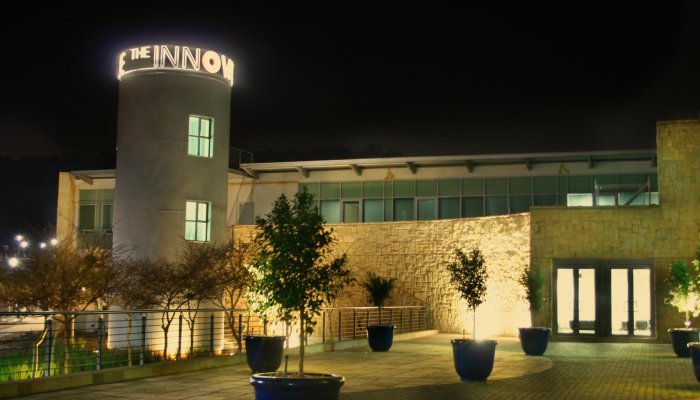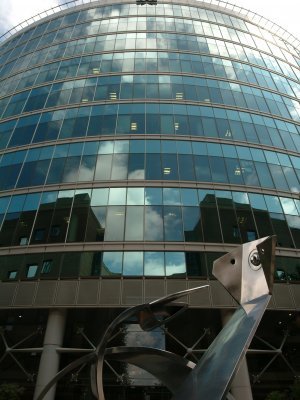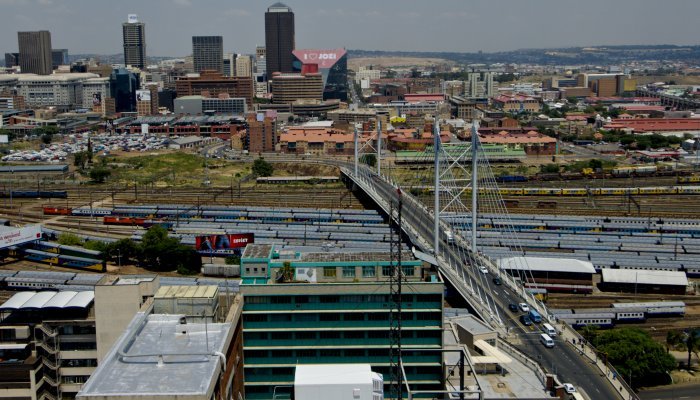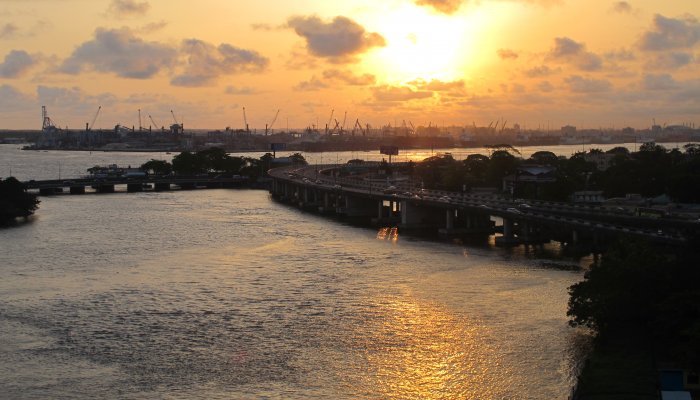The discovery of gold in the late 1800s kick-started the rapid growth of the Gauteng region. Today it has come a long way from those origins as a mining shanty town. It is South Africa’s most significant economic space, its wealthiest province, and by many estimates the largest urban economy on the continent. It plays a vital hub function. Road networks, railways, electricity transmission and distribution lines, and a host of other infrastructural networks, connect the city-region not only to the rest of South Africa, but to the Southern African region and the rest of the world.
Gauteng is dominated by its most recognisable cities of Johannesburg and Pretoria/Tshwane, but there are also a number of other significant urban centres. Most of these are inside the provincial boundary, but others are outside the administrative space of the Gauteng province. Nevertheless, these other areas are connected to Gauteng through flows of people, resources, information, services and infrastructure, which define the area as a functionally integrated city-region. This extended Gauteng City-Region (GCR) contains some 13 million people within 175 km of central Johannesburg – over a quarter of South Africa’s total population. In various ways the region is also an international economic force, and is registered by international agencies as a ‘global' city-region. Johannesburg alone was estimated by the OECD to have the 40th largest urban economy in the world in 2009 when measured on a purchasing power parity basis.
The GCR contributes just under 50% of South Africa’s economic output, with different areas focused variously on mining, manufacturing, financial and business services, innovation or trade; ideally working together to constitute a functionally integrated urban economy and single labour market. This region is the country’s centre of trade with Southern Africa and beyond, especially in terms of financial services, telecommunications and manufacturing and logistics flows, and also generates 50% of the country’s patents. Its relative economic weight in the country and the subcontinent means that the GCR has advantages over other parts of the country. There is a widespread perception that better work and education opportunities are available here. In comparative perspective, the GCR seems to offer higher levels of access to good housing and essential household infrastructures, greater proximity to urban amenities, and generally better standards of living.
As such, the area is a growing attraction for migrants from South Africa’s rural areas and other urban centres, as well as immigrants from the continent, giving it an increasingly cosmopolitan character and vibrant social and economic life. The GCR’s population is estimated to represent approximately 45% of South Africa’s internal migrant workers – many of whom partake in ‘circular migration’ from areas designated as ‘home’, to places of work. The ripple effects of their economic activity across the nation are evident, with the GCR acting as the origin of flows of money to elsewhere in the country and other African countries.
The Future: Opportunities
The Gauteng provincial government has recently announced plans to further ‘densify’ the GCR by building three new cities in the region – the first such settlements to be built from scratch after apartheid – which are intended to, according to Premier David Makhura, ‘direct investments in bulk infrastructure and shape public transport and economic development plans’. Plans are afoot to move away from smaller locations to creating ‘mega human settlements’ - numbering 20 000, 30 000 and 50 000 units per settlement. These settlements, planned for undisclosed locations on the West Rand, form part of larger plans to close the spatial gaps between Johannesburg, Tshwane and Ekurhuleni - along the M1 and N1 as well as the R21 passing OR Tambo International Airport. These spatial corridors would be filled up by development - building more settlements and businesses. The expected population growth of the GCR at current rates will be around 2.2% annually, including current rates of internal migration and immigration. On the plus side, this continues to concentrate resources, skills, labour and economic opportunity in the region.
To take advantage of that, major developing economies like South Africa’s need an efficient and effective infrastructure in order to function and compete on the global stage. This is even more so in the case of the GCR, which is at the same time the economic heartbeat of the country and landlocked, which makes supply chain and logistics infrastructure costly and complex. Government has focused on investment in key aspects of infrastructure to try to facilitate investment and economic development. One major focus area presenting opportunity for the depressed and shrinking SA manufacturing sector is the Aerotropolis project around the O.R.Tambo international Airport. An aerotropolis is a type of urban form comprising aviation-intense business and related enterprises. It is similar in form and function to a traditional metropolis, where there is a central city core and its commuter-linked suburbs, but has an airport city as its core and is surrounded by clusters of aviation related enterprise like logistics and manufacturing beneficiation. With Government investment in it, the GCR’s airport city is already in development and has begun attracting private sector investment in supply chain, construction, manufacturing and related industries.
Understanding the opportunities in the GCR also means understanding the macroeconomic shift away from Europe and towards Asian markets, which began as early as 2007. This shift is not only about changes in export demand. It has also had a fundamental impact on the structure and capacity of industry, as well on the quality and types of output in line with the demands of the new markets. The GCR has a large and diverse set of industry sectors, with a wide range of employment categories. The main employment sectors in the GCR are all in services, in an ongoing movement away from primary industry and resource extraction. The concentration of human resources, skills and a critical mass of infrastructure mean that the services sector has developed as, in some instances, a world-class economic offering with much opportunity for development and global competitiveness, especially in the private sector.
Given that the GCR is landlocked, the development of such sectors as financial services, the world-class banking sector, telecommunications and retail trade makes economic sense. After the impact of the global recession hit SA in 2009, employment in all major service sectors dropped, especially in the largest sector of the wholesale and retail trade, but also in financial services and the manufacturing sector. Employment in all of these sectors had risen by 2012, indicating some measure of economic recovery for the GCR.
Another attraction for the many international businesses with a regional or wider African presence, who are headquartered in the GCR, is the somewhat surprising finding that of 72 major cities across the world when last surveyed in 2012, Johannesburg was among the 16 least expensive. As a result, residents and business people in Johannesburg and the GCR at large were then much better off than their counterparts elsewhere in the world, contrary to popular perception that the cost of living and doing business in Johannesburg is unaffordable. Of course, this situation has changed more recently with labour unrest, service delivery cost escalations, and power generation challenges. Despite these challenges, the famous Rough Guide tourist guide has just voted Johannesburg its World City of the Year for 2015, primarily for the city’s investment in arts, cultural and tourist services hubs.
The Future: Challenges
Inequality
Despite its importance and its potential, the GCR faces many challenges. These include high levels of poverty, unemployment, social exclusion and crime. South Africa is one of the most unequal societies in the world, and this stark reality is particularly evident in Gauteng cities and towns. Like many other emerging economy megacity-regions, Gauteng has spatial concentrations of huge wealth alongside large informal settlements. And although there is gradual integration the concentration of different population groups in specific areas previously designated for them by apartheid remains to this day.
One of the consequences of this apartheid spatiality is the difficulty it represents in providing impoverished communities with the opportunities available to more privileged residents. Middle and upper-class citizens in the GCR live a lifestyle that would not be out of place in any of the great cities of the world. City-regions around the world facilitate high quality and high-tech lifestyles as well as employment in globally competitive companies. They attract entrepreneurs, bright minds, and ambitious individuals. They offer exposure to art and culture, safety and security, and green and public spaces. The GCR does this for many.
However, city-regions around the world are also often areas of conflict and exclusion, as the poor battle to find a foothold in the economy and broader society. The GCR is no different, and has a post-apartheid spatial configuration to overcome. As thinktank the Gauteng City-Region Observatory puts it, ‘the new black middle class is able to afford to live in suburbia, which was formally the preserve of white residents only, but the poor are locked into the townships previously zoned for other race groups by apartheid, or in informal settlements wherever space can be found. Meagre incomes are spent on basic needs and on transport from the distant periphery to the region’s three economic centres where true opportunity remains’. A consequence of this inequality for those in need of access to services and better quality of life is political and labour unrest. This is especially urgent in the provision of basic services and infrastructure. Already, in some city-regions around the world, such as Sao Paolo in Brazil, water shortages and rationing because of continued rapid and unregulated population growth have led to civil unrest.
Unemployment
Given its prominent position in the national economy, the economy of the GCR is highly sensitive and vulnerable to global economic shocks such as the recent global recession as well as the on-going Eurozone crisis. For Gauteng the shift away from Europe and towards Asian markets may present opportunities for job creation, but there is also a danger of job losses in sectors where production is declining or volatile, such as manufacturing.
Although the absolute number of people employed in South Africa has increased in the last 10 to 15 years, its unemployment rate remains dismally high by international standards. For example, in the second quarter of 2013, the national official unemployment rate was 25.6% and that of the GCR was 25.0%.
Apart from a generally low rate of economic growth, the prominence of organised labour in SA has also been blamed for continuing high rates of unemployment. The conflict between big business and organised trades union has dominated government policy-making around the labour market.
Employment creation remains a key priority for the GCR. Given that Gauteng exerts a strong attraction for migrant populations both local and foreign, thus ensuring that population influx and additional strain on resources and infrastructure will continue, employment creation assumes an even greater urgency.
Lagos in perspective
It is interesting to compare the GCR with the other major city-region or megacity in sub-Saharan Africa, Lagos. The Nigerian megacity is now estimated to be the 13th largest economy in Africa. Greater Lagos, or Lagos State, is estimated to contain around 17 million people. The population figure is often disputed, and may be as high as 21 million in the wider metropolitan region. The Lagos region has a complex geography of islands and ports, as well as forming a continuous urban area on the mainland. This makes the infrastructure and transport systems challenging and at times expensive. Like Johannesburg, a bus rapid transit system is in place. The national economy is not as diversified as that of the GCR, and is driven by oil. Lagos itself is a key import/export destination for crude oil and petroleum products. Last year these formed 14% of Nigeria’s GDP, and 90% of its foreign earnings. In 2013, Lagos produced 12% of Nigeria’s GDP, or US$32 billion.
As with the GCR, the economic inequalities of the Lagos city-region are compounded by its relative lack of efficient infrastructure, with the typical picture in emerging market megacities of rapid population influx and no concomitant urban planning or long-term infrastructure investment. Pollution and traffic congestion result, as well as the concomitant economic and logistical challenges of moving goods in and out, and establishing business networks.
While the GCR has a diverse and fast growing economy in comparison with the rest of the country therefore, the labour market is not yet dynamic enough to accommodate the aspirations of all prospective workers. Economic activity is still patterned by assumptions and interactions inherited from the apartheid era that often limit the opportunities for new market entrants, especially young work-seekers. The result is high levels of frustration and marginalisation for many job-seekers. In turn, dynamism and cosmopolitanism have flipsides in simmering resentment of those who have succeeded, and antipathy to newcomers, especially foreign migrants, as has been seen in recent xenophobic attacks on foreign nationals, and specifically on their small businesses.
Infrastructure and Service Delivery
The provincial government’s recent plans to build new settlements and densify the GCR population even further will require a significant increase in the province's electricity generation capacity. Public statements by the provincial government about adding more than 300MW of electricity to the grid this year, making municipal-owned power entities such as City Power responsible for ensuring the province's energy security, have been proved somewhat fanciful by the well-documented national power crisis.
Effective and affordable power provision is clearly more urgent in the most populous and globally connected part of the country. Just as vital to the success of the GCR is the guaranteed and efficient expansion of the provision of other basic services, such as transport networks, water provision and properly regulated urban planning.
The GCR – Quo Vadis?
The GCR’s significant, urban and centralised economy places a major burden on those in power both locally and provincially, given its massive impact not just on South Africa but also southern Africa. A conundrum facing the GCR is how to manage infrastructure already under pressure – in ways that allow for inclusive and equitable service delivery. For the people living there and businesses operating there, many opportunities exist – primarily that the GCR, as with other megacity regions around the world, acts as a catalyst for business growth, regional and global networking. Population growth follows the growth of resources, skills and investment in a virtuous circle. As we have seen, this is especially true for the GCR as a regional African hub, and as a services industry ‘centre of excellence’.
That growth and potential, however, is only possible given the right balance of infrastructure and services provision in the GCR. And the balancing act of providing services and infrastructure equitably to all of the GCR’s population is equally important. The recent xenophobic attacks, coupled with well-documented national power constraints and citizen opposition to infrastructure funding through e-tolls, for example, point to a disconnection between public policy and the private sector’s needs. Further strain on the support sectors – municipal and metropolitan administration, infrastructure project implementation, etc. – and a slowing national growth rate, make for a dangerous bend in the road for the GCR’s development, towards the megacity as declining slum. The GCR is, on the whole, at an economic crossroads for development. We must hope for the country’s sake that it makes the right turn.
[Research acknowledgement: The Gauteng City Region Observatory – http://www.gcro.ac.za]








